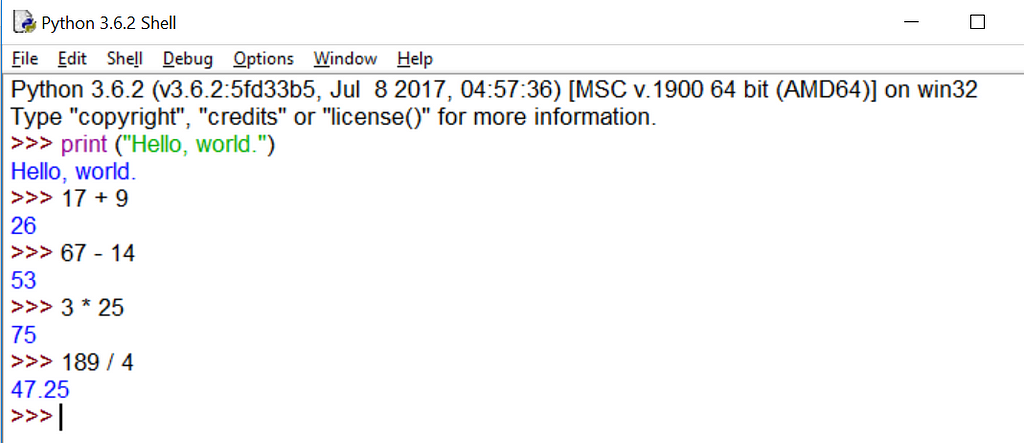Latest news about Bitcoin and all cryptocurrencies. Your daily crypto news habit.
Python Fundamentals [The One Minute Version]
Python truly is the language of the moment. It is the world’s fastest-growing programming language — used by YouTube, Dropbox, Spotify, Netflix and even the CERN LHC; and since Michael Gove disapplied the ICT curriculum programs back in 2012, Python has become the de rigueur choice of Computing teachers in the UK and beyond. Take the statement:
For various reasons it is one of the fundamental laws of programming that the first program you write is one which says ‘Hello’ to the entire world. Job done here via something called the shell — which is an interactive window within an Integrated DeveLopment Environment called IDLE.*
You can see here that the initial message tells me which version of IDLE I am running (version 3.6.2), gives me a date and time of when it was released, and informs me that it is running on Windows 32, although it is in fact at 64-bit program. I can also see from the chevrons (>>>) that I am in the shell, because the shell is where I can test out single lines of code and have the code execute right in front of me. To the great amusement of my students, I refer to the shell as my shell. As is mi shell. As in Michelle. :)
*Fans of Monty Python will soon cotton on to the naming convention here.
Python Fundamentals [The One Minute Version] was originally published in Hacker Noon on Medium, where people are continuing the conversation by highlighting and responding to this story.
Disclaimer
The views and opinions expressed in this article are solely those of the authors and do not reflect the views of Bitcoin Insider. Every investment and trading move involves risk - this is especially true for cryptocurrencies given their volatility. We strongly advise our readers to conduct their own research when making a decision.

